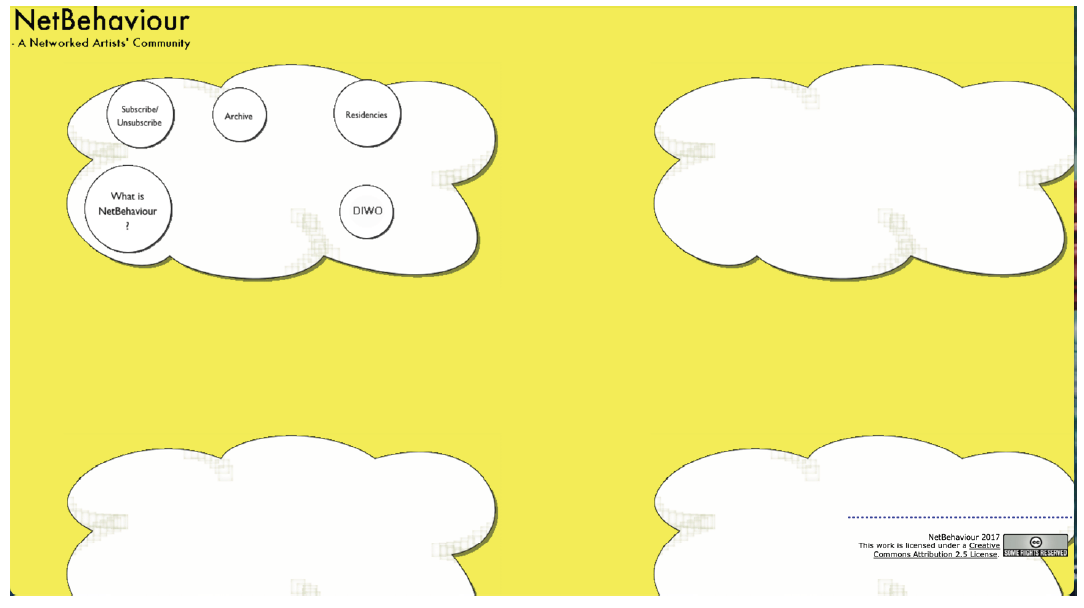Creativity and Exchange
Convergences Between the Editing Policies of Robert Filliou's _Eternal Network_ and Internet Art
DOI:
https://doi.org/10.30827/sobre.v9i1.26938Keywords:
Filliou, Internet art, connection, exchangeAbstract
At a time when the Internet has emerged as the new bastion of egomaniacal consumerism, it seems necessary to turn again to art as an engine of social change. Although it may seem difficult to talk about Internet art based on the philosophies of an artist who died before the implementation of the World Wide Web, the aim of this qualitative research is to rescue and give visibility to the existing and barely theorized relations between the artistic-spiritual editing policies advocated by Robert Filliou's Eternal Network and certain participatory strategies developed within Internet art.
Downloads
References
Aparicio, A. (2002, diciembre 19). Las nuevas formas de acción contra la política y el arte en la cibercultura. ¿Amarga victoria del situacionismo? [Conferencia]. Seminario Cibercultura. Propósito experimental, Pamplona, España. http://www1.unavarra.es/digitalAssets/112/112566_alberto_aparicio.pdf
Ariño, A. (2009). El movimiento Open. La creación de un dominio público en la era digital. Universitat de València.
ARTEX. (1982). Computer timesharing. Alien productions. http://alien.mur.at/rax/ARTEX/artxblurb.html
Art-of-Peace Biennale. (2018, mayo 27). What Is Peace? Exhibition Tour. YouTube. https://www.youtube.com/watch?time_continue=1&v=GqJxXluKAlE
Ascott, R. (1983). LA PLISSURE DU TEXTE [Obra de arte online colaborativa desarrollada entre el 11 y el 23 de diciembre de 1983]. http://alien.mur.at/rax/ARTEX/PLISSURE/plissure.html
Bianchini, A. (1999). Conceptos y definiciones de hipertexto. Universidad Simón Bolívar. https://bit.ly/3HWi3E4
Bürger, P. (1987). Teoría de la vanguardia. Ediciones Península.
Carrillo, J. (2004). Arte en la red. Ediciones Cátedra.
Caruso, D. (1984, septiembre 10). People. InfoWorld, The Newsweekly for Microcomputer Users. 6(37), 16. https://bit.ly/2Gj5nso
Crane, M. (1984). The Origins of Correspondence Art. En M. Crane y M. Stofflet (Eds.), Correspondence Art (pp. 83-116). Contemporary Art Press.
Deck, A. (2003). Anti-War Web Ring. [Obra de arte online colaborativa] http://artcontext.org/anti-War/index.php?huh
Deck, A. (2009). AntiWar404. [Obra de arte online colaborativa] http://getpeaceful.org/act/08/antiwar404/docs/index.php
Depocas, A. (2000). Western Front: Western Front Society Media Archives Project. Fondation Daniel Langlois pour l’art, la science et la technologie. http://www.fondation-langlois.org/html/f/page.php?NumPage=209
Filliou, R. (1970). Teaching and Learning as Performing Arts. Verlag Gebr.
Friedman, K. (1995a). Foreword: The Eternal Network. En C. Welch (Ed.), Eternal Network: A Mail Art Anthology (pp. XV–XVII). University of Calgary Press.
Friedman, K. (1995b). The early days of mail art. En C. Welch (Ed.), Eternal Network: A Mail Art Anthology (pp. 3–16). University of Calgary Press.
Higgins, D. (1966-1983). The Something Else Press Newsletter. The Something Else Press.
Higgins, D. (1966, febrero). Intermedia. The Something Else Newsletter, 1(1), 1-4. http://www.primaryinformation.org/oldsite/SEP/Something-Else-Press_Newsletter_V1N1.pdf
Himanen, P. (2002). La ética del hacker y el espíritu de la era de la información. Editorial Destino.
Johnson, R. (1965). The Paper Snake. The Something Else Press.
Jouval, S. (2003). Robert Filliou: Exposition pour le 3ème oeil. Robert Filliou, Genio sin talento (pp. 8-15). Museu d’Art Contemporani de Barcelona.
Jouval, S. (2012). Robert Filliou dans les collections du musée. Centre Pompidou, Direction de l’action educative et des publics. http://mediation.centrepompidou.fr/education/ressources/ENS-Filliou/index.html
Léger, M. J. (2012). A Filliou for the Game: From Political Economy to Poetical Economy and Fluxus. RACAR: Revue D’art Canadienne / Canadian Art Review. 37(1), 64-74. http://www.jstor.org/stable/42630858
Martín, J. (2012). Prácticas artísticas e Internet en la época de las redes sociales. Akal.
McLuhan, M. (1996). La aldea global: transformaciones en la vida y los medios de comunicación mundial. Gedisa.

Downloads
Published
How to Cite
Issue
Section
License
Copyright (c) 2023 Elena López Martín, Borja Morgado Aguirre

This work is licensed under a Creative Commons Attribution-NonCommercial-ShareAlike 4.0 International License.
Aquellos autores/as que tengan publicaciones con esta revista, aceptan y certifican los términos siguientes:
· Que ha contribuido directamente al contenido intelectual del trabajo, del cual se hace responsable a todos los efectos.
· Que aprueba los contenidos del manuscrito que se somete al proceso editorial de Revista SOBRE, y por tanto está de acuerdo en que su nombre figure como autor.
· Que el contenido del artículo no ha sido publicado y que tampoco figura en otro trabajo que esté a punto de publicarse.
· Que se compromete a no someterlo a consideración de otra publicación mientras esté en proceso de dictamen en Revista SOBRE, ni posteriormente en caso de ser aceptado para su publicación.
· Que no ha tenido ni tiene, relaciones personales o financieras que puedan introducir prejuicios y sesgos en el desarrollo o los resultados del presente trabajo.
· Que han sido mencionadas en el epígrafe de agradecimientos todas aquellas personas que, habiendo otorgado su permiso para tal mención, han contribuido de manera sustancial al desarrollo del trabajo.
· Que se compromete a facilitar, cuando así lo requiera la revista, el acceso a todos los datos y fuentes en los que se funda el trabajo presentado.
· Que participará activamente en la realización de todas aquellas modificaciones de estilo u ortotipográficas que sean necesarias para la publicación del trabajo cuando así se lo notifique el equipo editorial de la revista.
· Que no ha violado, ni violará, las leyes y derechos humanos o animales durante el proceso de investigación y publicación de este trabajo.
· Que ninguna de las instituciones en las que desarrolla su labor científica e investigadora ha presentado objeciones con respecto a la publicación del manuscrito que se somete a evaluación.
· Que todos los datos y las referencias a materiales ya publicados están debidamente identificados con su respectivo crédito e incluidos en las notas bibliográficas y en las citas que se destacan como tal y, en los casos que así lo requieran, cuenta con las debidas autorizaciones de quienes poseen los derechos patrimoniales.
· Que los materiales están libres de derecho de autor y se hace responsable de cualquier litigio o reclamación relacionada con derechos de propiedad intelectual, exonerando de responsabilidad a Revista SOBRE.
· Que en caso de que el trabajo sea aprobado para su publicación, autoriza de manera ilimitada en el tiempo a la entidad editora para que incluya dicho texto en Revista SOBRE y pueda reproducirlo, editarlo, distribuirlo, exhibirlo y comunicarlo en el país y en el extranjero por medios impresos, electrónicos, CD, Internet o cualquier otro medio conocido o por conocer.









